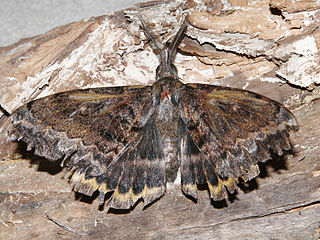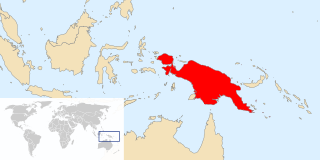
The angiana tree frog is a species of frogs in the family Hylidae. It is found in West Papua in Indonesia and Papua New Guinea. Its natural habitats are subtropical or tropical moist montane forests and rivers.
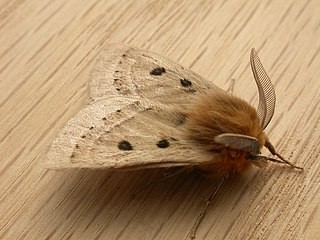
Anthela ocellata, the eyespot anthelid, is a moth of the family Anthelidae. The species was first described by Francis Walker in 1855. It is found in Australia, from Bundaberg to Hobart along the east coast.
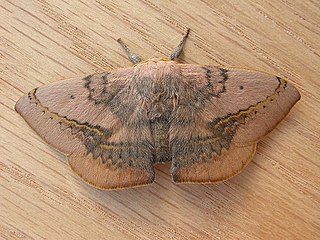
Anthela varia, the variable anthelid, is a moth of the Anthelidae family. The species was first described by Francis Walker in 1855. It is found in the coastal areas of southern Western Australia, southern Queensland, New South Wales, and Victoria.
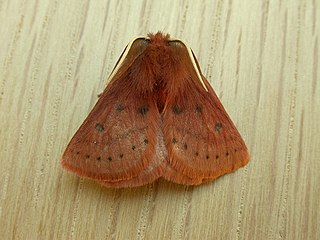
Anthela ferruginosa is a species of moth of the Anthelidae family. It is found in Australia.

Anthela is a genus of moths of the family Anthelidae. The genus was erected by Francis Walker in 1855.
Anthela binotata is a moth of the Anthelidae family. The type location is Peak Down.
Anthela brunneilinea is a moth of the Anthelidae family. It is found on the Kei Islands.
Anthela canescens is a moth of the Anthelidae family. It is found in Australia.
Anthela charon is a moth of the Anthelidae family. It is found in New Guinea.
Anthela ekeikei is a moth of the Anthelidae family. It is found in New Guinea
Anthela inconstans is a moth of the Anthelidae family. It is found in New Guinea.
Anthela limonea is a moth of the Anthelidae family. It is found in Australia.
Anthela lineosa is a moth of the Anthelidae family.
Anthela maculosa is a moth of the Anthelidae family. It is found in Australia.
Anthela odontogrammata is a moth of the Anthelidae family. It is found in New Guinea.
Anthela roberi is a moth of the Anthelidae family. It is found in New Guinea.
Anthela trisecta is a moth of the Anthelidae family. It is found in Australia.
Pseudodreata aroa is a moth of the Anthelidae family. It was described by George Thomas Bethune-Baker in 1904. It is found in New Guinea.
Anthela or Anthele was a town and polis (city-state) of Malis in Ancient Thessaly. Herodotus places the town between the small river Phoenix and Thermopylae which was a celebrated pass between Thessaly and Phocis. He also mentions that the Thessalian Asopus river passed through its surroundings and that there was a sanctuary of Demeter, a place where the Amphictyonic League celebrated its meetings and a temple of Amphictyon. According to legend, the league was founded, in part, to protect the temple of Demeter at Anthela. Anthela is in the immediate vicinity of the pass of Thermopylae, celebrated for the temples of Amphictyon and of the Amphictyonic Demeter, containing seats for the members of the Amphicytonic council, who held here their autumnal meetings. At Anthela, Mount Oeta recedes a little from the sea, leaving a plain a little more than half a mile in breadth, but again contracts near Alpeni, the first town of the Locrians, where the space is again only sufficient for a single carriage. Modern scholars identify its location with the modern village of Anthili in the municipality of Lamia.

